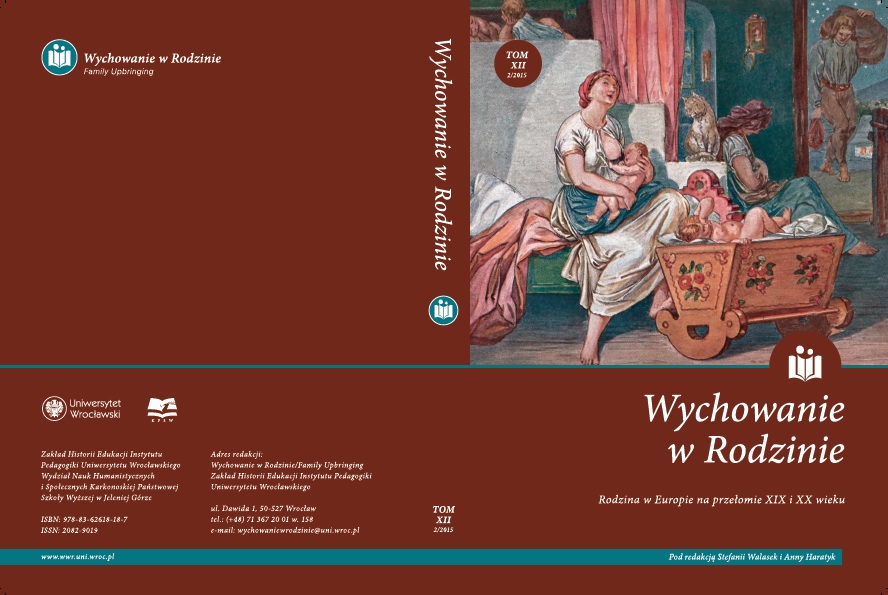Wychowanie seksualne młodzieży w świetle XIX-wiecznych poradników parenetycznych
Sexual education of youth in the light of the 19th century paraenetic guidebooks
Author(s): Mateusz SzubertSubject(s): History, Social Sciences, Education, Media studies, Communication studies
Published by: Zakład Historii Edukacji w Instytucie Pedagogiki Uniwersytetu Wrocławskiego
Keywords: sexual pedagogy; paraenetic narrative; moral discourse; shame; transformation of intimacy; taboo; cultural changes in the customs of the 19th century
Summary/Abstract: The objective of the paper is to describe the cultural changes in the customs in the 19th century. The analysis of moralistic treaties and parental guidebooks, perceived as important cultural texts, allows investigation of the process of changes taking place in –what is called – the sexual pedagogy. The turn of the 18th and the 19th centuries can be interpreted as a visible increase in the interest in human sexuality at the level of a paraenetic narrative. Thus, a moral discourse is combined with the discourse of hygiene.From the perspective of cultural history, special attention should be paid to thein creased popularity of the category of shame understood as a regulator of social bonds (including family bonds). The transformation of intimacy in the culture of the 19th century seems to be important and interesting evidence of the formation of double morality (overt and covert) as well as of the functioning of conflicting tendencies for tabooing and, at the same time, speaking about sexual experiences.The fear of social condemnation effectively shaped everyday life. Scandals and social embarrassment were avoided almost as much as a detriment to one’s health or a risk of sudden death. The second half of the 19th century was the time of a rapid increase in the popularity of educational and social guides. Emotions and spontaneous behaviour become inappropriate, and the social life became dominated by mechanisms and self-disciplinary tendencies. Social life was under heavy peer pressure and – by the same token – individual gestures and tendencies were eradicated.The culture of the 19th century is a particularly interesting reservoir of matrimonial and parental models. The education of children and teenagers focuses on teaching one how to play desired social roles: of virtuous misses from good families or, a little less restrictive, of model bachelors, potential ideal husbands and fathers.The theatricalisation of everyday life reached its peak in the 19th century culture. At the same time, it must be emphasised that society was heavily diversified (divided into particular classes); savoir-vivre and courtesy in daily relations applied only to the privileged social groups, as nobody expected the knowledge of etiquette in the lower classes.
Journal: Wychowanie w Rodzinie
- Issue Year: XII/2015
- Issue No: 2
- Page Range: 341-357
- Page Count: 17
- Language: English, Polish

